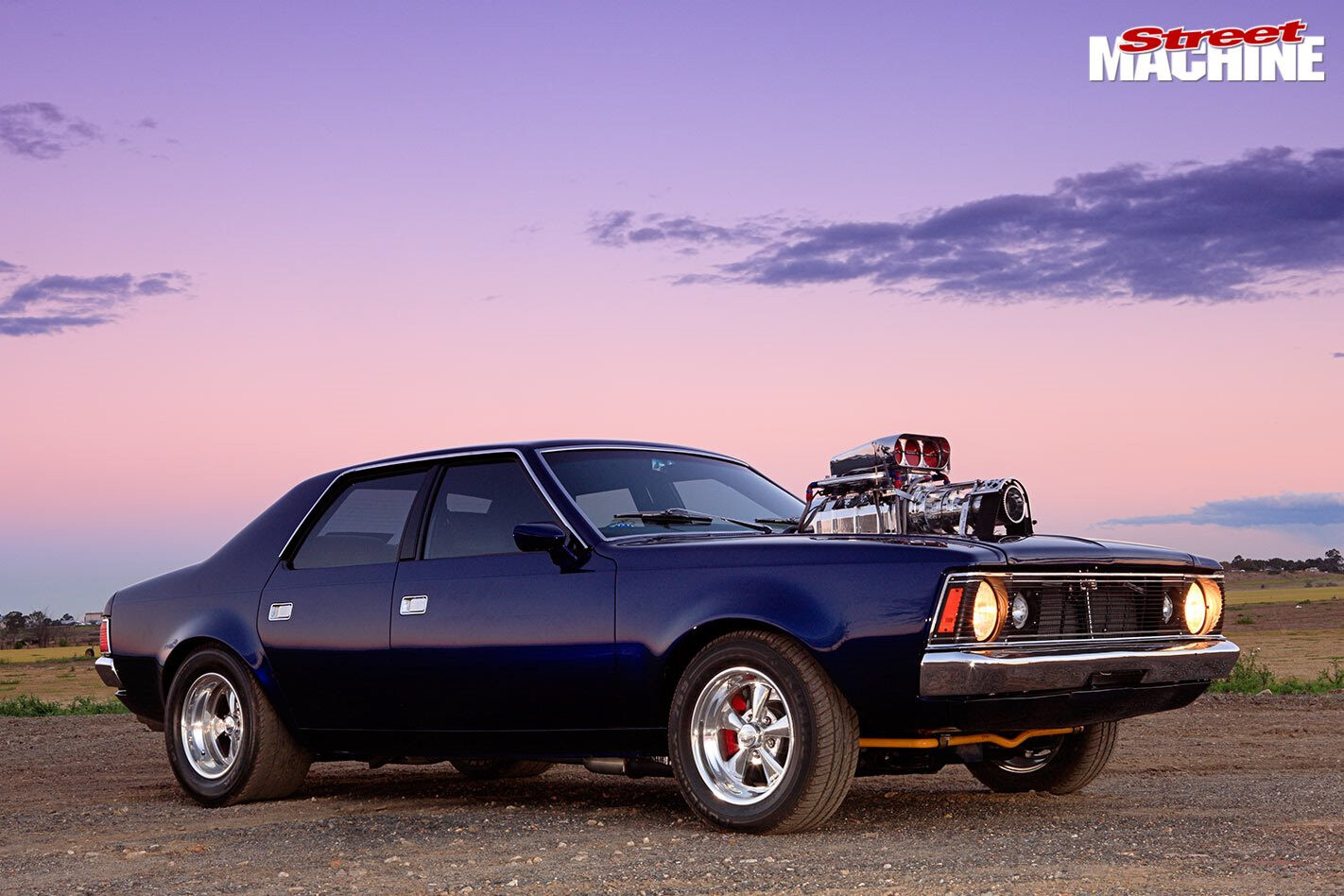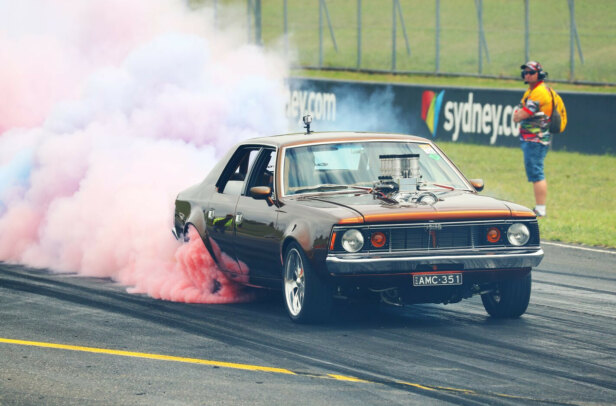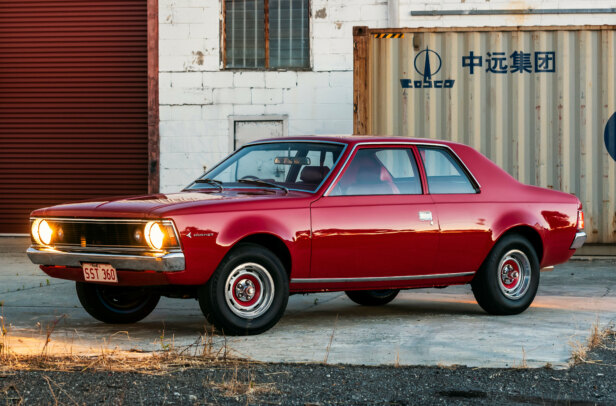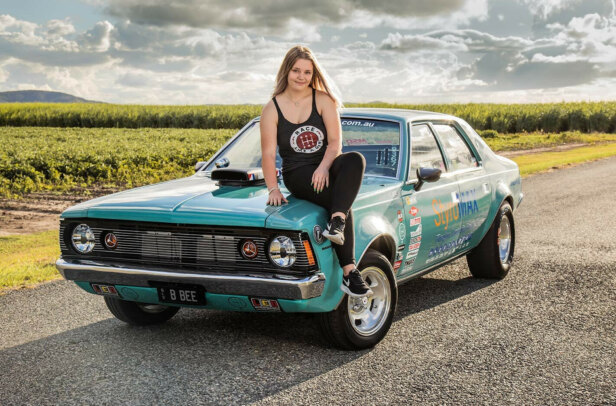FOR a lot of blokes buying their first cars, what their friends say and drive influences what they end up spending their hard-earned on. Sydneysider Michael Brown is a little different. While all his mates were buying Toranas and Falcons he forked out $300 for a Rambler Hornet. It was 1980 and Michael was 18. He might not look as fresh-faced as he did 29 years ago but his Hornet looks much better.
This article was first published in the April 2009 issue of Street Machine
Back when the VC Commodore was brand new and Aussie Crawl’s Boys Light Up topped the charts, this Hornet was only eight years old but already starting to get tired.
“It was bright orange and looked like it came from a junkyard. I converted it to a 351 Clevo and had it on the road for a couple of years. I bought a house, then a company, and the Hornet sat in the shed for almost 20 years until I was finally in a position to do what I wanted. And what I always wanted was a blown car.”
Although the Rambler cost him a measly $300, once he got stuck into the car, any thoughts of a low-buck rebuild went out the window.
Michael went to town on the braided hose and Earl’s fittings. The plumbing for the under-blower intercooler runs into the back first and then exits out the front before passing through a PWR intercooler and back to the icebox in the boot
“It was about $35,000 just for the panel and paint. I’d hate to think what I’ve spent on it — I stopped counting a long time ago!”
It sounds like a lot just for shiny paint but a lot more went into this car besides laser-straight panels. While Camden Crash & Restoration gets credit for the mirror smooth Lapis Blue Pearl finish and the underlying bodywork, Kreative Enterprises in Windsor was the place that essentially put the rest of the car together. It performed a heap of fabrication on it that you can’t see. So much that Michael goes so far as to say: “You can basically thank them for the car.”
Hardcore fuel system and killer audio — this car’s got all the bases covered
It might look standard, aside from the big-arse motor through the bonnet, but “the only thing stock is the body. It’s got 75×50 box section in the sills and the eight-point rollcage ties into the chassis,” Michael says.
The eight-point ’cage isn’t overkill; not with that blown and injected 427 Windsor.
Built by Roland Jahn Performance Engines, it’s a serious bit of gear. Starting off with a Dart block, Roland filled it with a Callies crank, Howard rods, forged Ross pistons, custom-ground roller cam and an Australian Muscle Parts belt drive “because it kept stretching double-row timing chains”, Michael says.
The boot-mounted icebox helps the under-blower intercooler drop intake temps from 130C to 50C. Looks like there’s still room for a couple of stubbies too!
It’s topped with CHI heads running Manley valves and springs, and force-fed by an 8/71 Blower Shop blower. That wasn’t always the case, though: “I had a 6/71 on it but it was turning too hard and putting too much heat into the fuel charge. So as well as the 8/71 we put a Blower Shop intercooler underneath it — that’s why it sits so high — and an icebox in the boot. It dropped the intake temperatures from 130C to around 50 or 60C,” he says.
That icebox required a bit of extra plumbing and if you examine the pics of the engine bay, you’ll see coolant lines running into the back of the intercooler. These exit at the front, then run through a PWR intercooler and back to the icebox in the boot via the transmission tunnel, which has been enlarged considerably by Kreative Enterprises to make room and allow everything to be neatly tucked up.
Although most Australians know these cars as Rambler Hornets, the company’s official name was American Motors Corporation, or AMC
The big Windsor makes more than 700hp on pump gas. Helping it do that is a complete MoTeC EFI set-up, which includes a datalogger with pyros in each exhaust so each cylinder can be tuned individually.
“What I really want to do is tune it for E85. We’ll be able to up the boost from 10psi to around 18 and the motor should take 20–22lb. I want about 1200hp out of the motor,” Michael says.
The car has run a best of 9.98 on slicks and ran that close with a 10.3 on street radials — who knows what it’ll do with an extra 500 horsepower?
There’s a full Auto Meter catalogue screwed into the dash, with diff temp, gearbox temp, engine oil temp, oil pressure, fuel pressure, lambda and water temp. “The only gauge I look at is the tacho!” Michael admits
Under the tail is a nine-inch diff set-up that includes a 3.7 Detroit Locker centre sitting in a competition housing and turning 35-spline Moser axles. Making sure it hooks up properly are AVO coil-overs on a custom four-link — more of Kreative Enterprises’ work.
Initially, Michael went with a C4 but it wasn’t quite up to the task. “It had a billet input shaft which no-one had managed to twist yet — except me! I had to get a C6,” he says. And yes, that also has a billet input shaft.
The ’box was put together by Al’s Race Glides, which may have to change its name if word gets out on how good the job was. Michael’s not afraid to give his car a bit of a hiding and this ’box is hanging in just fine.
It got a pretty good workout at the Tassie Powercruise, as Michael had a point to prove: “I snapped a crank at Powercruise last year, so I really wanted to do well this year. I got a trophy for every event I entered, which was everything except the drifting and burnouts. I didn’t enter those because I refuse to thrash my car that much.”
All up, he left Tassie with nine trophies and about $2000 in cash; a successful trip in anyone’s language. One achievement he didn’t get a prize for was blowing up the dyno — twice! They ended up putting seven straps on the car and it still lit the tyres at 100mph, doing around 6200rpm. It was making 703hp at that point but it revs to 7500.
Instead of the usual fully sick DVD, Michael’s Hornet features something much more useful — a MoTeC Sport Data Logger
Luckily, Michael was the last guy on the dyno but it was a moot point as no-one got near his power figure.
The trip home was cool too, driving onto the Spirit of Tasmania with CYCOV8, UCSMOKE and B1GV8. Though Michael insists the methanol coming out of UCSMOKE was to blame for the tears in his eyes.
STING IN THE TAIL
AMC fans will know the Hudson Hornet (below). Raced in the early 1950s in NASCAR and other stock car categories, most famously by Marshall Teague and Herb Thomas, the car soon became a regular winner.
Unique at the time, its step-down design and light weight made for a better handling car, so it could get away with a smaller engine — a six-cylinder flathead. At 308ci, it wasn’t really giving much up, though.
Tuned by Smokey Yunick, the twin-carb (known as Twin H-Power) race-prepped flatheads pumped out more than 200hp and won 66 of 108 races between 1951 and 1953, so it was no surprise they soon became known as the Fabulous Hudson Hornets
MICHAEL BROWN
1972 RAMBLER HORNET
Colour: Lapis Blue Pearl
ENGINE
Brand: Dart FSB 427ci
’Charger: Blower Shop 8/71 with intercooler
EFI: MoTeC
Heads: CHI
Valves & springs: Manley
Lifters: Howard
Pistons: Ross
Conrods: Howard
Crank: Callies
Sump: Kreative Enterprises
Cooling: PWR radiator, BA Falcon fans
Exhaust: Custom
Ignition: Modified VT Commodore dizzy, MSD coil
Power: 718rwhp
TRANSMISSION
Gearbox: C6
Diff: Competition housing, 35-spline Moser axles, 3.7 Detroit Locker
Converter: TCI
BUMP & STOP
Springs: Kings (f&r)
Shocks: Koni (f), AVO (r)
Mods: All arms box-sectioned (f), four-link (r)
Steering: HZ column
Brakes: DBA slotted (f&r)
Calipers: VT Commodore (f), AU Falcon (r)
INTERIOR
Seats: Scheel (f), custom (r)
Tiller: Billet Specialties
’Cage: Kreative Enterprises eight-point
Instruments: Auto Meter C2
Shifter: B&M
Stereo: Kenwood
RIMS & TYRES
Wheels: Cragar 15×7 (f), 15×10 (r)
Tyres: 235/60 (f), 295/50 (r)
THANKS
Kreative Enterprises (02 4577 3633); Al’s Race Glides (02 9792 5999); Brenda & the kids




Comments